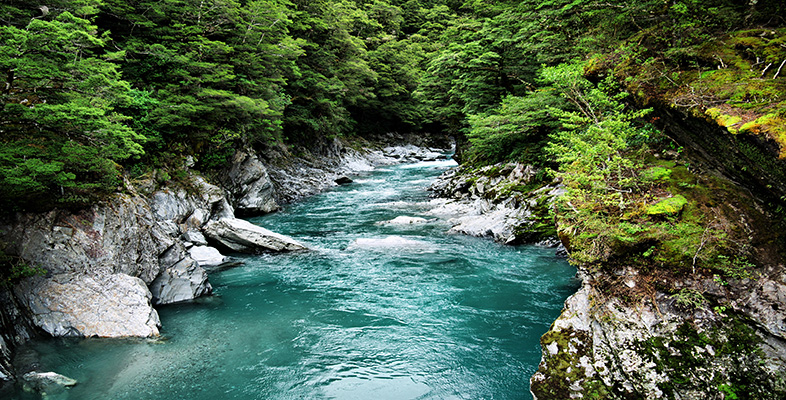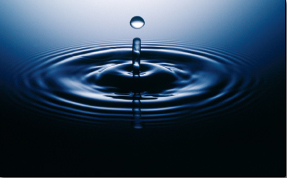2.3 The study of a raindrop
Most of the usable water is derived from the 1.1 × 105 km3 that falls over the land surface each year as rain, snow, sleet or hail. The collective term for all of these sources of water is precipitation. At this point, you will consider the size of the drops of water that make up clouds or rain (Figure 5).
The typical distance across a water droplet in a cloud is one hundred-thousandth of a metre, that is, ![]() m or 0.000 01m. This corresponds to
m or 0.000 01m. This corresponds to ![]() mm or 0.01 mm, which is very small. Imagine dividing the gap between adjacent millimetre marks on a ruler into 100 parts! Many of these droplets coalesce to give a raindrop that is about two-thousandths of a metre wide (
mm or 0.01 mm, which is very small. Imagine dividing the gap between adjacent millimetre marks on a ruler into 100 parts! Many of these droplets coalesce to give a raindrop that is about two-thousandths of a metre wide (![]() m, 0.002 m or 2 mm). Even these drops are small, but clearly they are water.
m, 0.002 m or 2 mm). Even these drops are small, but clearly they are water.
It is interesting to contemplate whether there is such a thing as a smallest particle that is still recognisably water and from which all larger volumes of water are made. In other words, if you start with a raindrop and keep halving its volume, is there a point when a further reduction gives something that stops being water? It is often useful in science, when dealing with complex ideas, to think of an analogy. One analogy for this 'halving' of a drop of water is to define a single living cow starting from a small herd of eight cows. If you halve the herd, you get four cows. Repeating the process gives two cows and repeating it again leaves one living cow. If this remaining cow were halved, you would agree that what remains is certainly not a living, whole cow. The cow would have been destroyed. You can conclude that one whole living cow is the smallest item from which herds of any size can be composed. Unfortunately, once a drop of water is halved several times, it becomes extremely small. It is a process that cannot be studied with the naked eye - or even with a conventional microscope.
In principle, a typical raindrop - say, 2 mm across - could be halved in volume 67 times before a single particle that is still recognisably water emerges. The 68th division by two, like the halving of a single cow, would destroy the water. This smallest particle that is still water is called a water molecule and its dimensions are almost inconceivably small. Molecules are the basic particles of many solids, liquids and gases.
It is not easy to describe the size of a water molecule because its shape is not regular. However, if its shape were likened to a tiny sphere, it would be about 0.000 000 0002 m across. It is difficult to comprehend a number this small, but you can probably imagine why it is impossible to do the halving experiment with a molecule. Roughly 1020 of these molecules would be needed to make a single raindrop.
As when writing very large numbers, there is an inherent danger in writing very small numbers such as 0.000 000 0002. Once again, the zeros are the problem. There are just too many of them! However, there is a notation that minimises the risk of making mistakes when working with such numbers. As before, it relies on the powers of ten idea to reduce many of the zeros. It is explained in Section 2.4.

